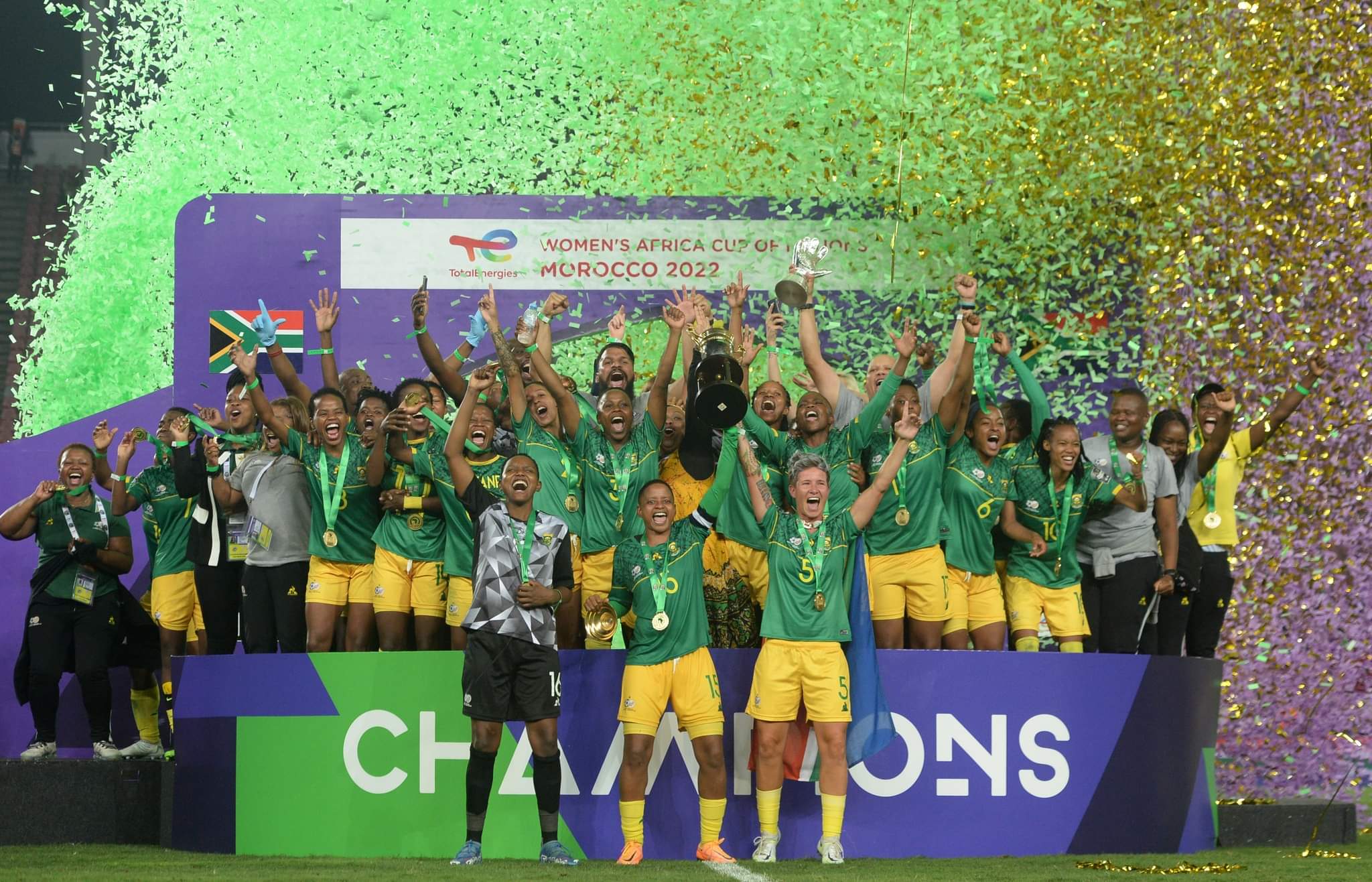Empowering Our Game was the theme for the 2022 TotalEnergies Women’s Africa Cup of Nations hosted by Morocco which saw South Africa crowned Champions.
After losing the final to Nigeria in 2018, Banyana Banyana finally got their hands on the trophy that they craved so very much.
Over the years, Women’s Football on the continent has been dominated by Nigeria who have won 9 titles from the last 14 editions.
The Super Falcons were favorites to retain their crown but it was not to be as we saw emerging Nations take the fight to the defending Champions.
Nations like the Mares of Botswana mesmerized the crowd with their stylish football on their debut appearance. Botswana sailed through to the Quarterfinals as one of the third best placed teams in their Group.
Then there were the Zambians who were missing their inspirational captain Barbara Banda together with two other key players in Rachael Kundananji and Rachael Nachula. The Copper Queens managed to dominate their Group and qualify to the FIFA Women’s World Cup for the very first time. Not only that, they went on to stun Nigeria in the third place play off to mint bronze.

The hosts Morocco too who have failed to navigate past the group stages in the past managed to qualify not only to the FIFA Women’s World Cup but also compete for the WAFCON trophy in the final 2-1 loss to South Africa.
And South Africa the eventual winners won it for the first time in their history while Nigeria will be kicking themselves as they finished fourth for the first time in the history of the competition.
The tournament in Morocco revealed a new dimension to the women’s game which saw record crowds attend matches across all the venues.

This year’s Women’s Africa Cup of Nations (Wafcon) in Morocco has raised the stakes for women’s football across the continent, but the next challenge is to capitalise on its success.
Expanded to 12 teams and with increased prize money from the Confederation of African Football (Caf), the tournament saw record crowds for women’s matches and culminated with South Africa lifting the trophy for the first time.
A crowd of 45,562 watched the semi-final between Morocco and Nigeria, with the final between the hosts and South Africa beating that record again with over 50,000 in attendance at the Prince Moulay Abdellah Stadium.
South Africa picked up improved prize money of $500,000 but there is still a vast gap to the rewards on offer in the men’s game, given Senegal took home $5m for their Nations Cup triumph in February.
A lot still needs to be done to improve the monies and allowances for Women Footballers in comparison with their male colleagues.
Following Banyana’s triumph, The South African Football Association (SAFA) announced that both the Male National Team (Bafana Bafana) and the Womens’s National Team (Banyana Banyana) will be paid the same amount henceforth. Very commendable which many FAs on the continent must emulate.
The interest continues to grow from strength to strength. FAs accross the continent must invest heavily in Women’s Football which is slowly taking it’s place alongside the men’s game. The Revolution of Women’s Football in Africa is underway.



CAF Confederation Cup
Simba book final spot in CAF Confederation cup
Must See
-


AFRICA
/ 5 years agoSierra Leone FA President Isha Johansen endorses Patrice Motsepe for CAF President
Sierra Leone FA President who also doubles up as CAF Executive Council member Madam...
-


Football
/ 5 years agoIT JUST CAN NOT BE – AN AFRICA FULL OF MORONS?
By John De Mathews, There is an eerie silence around Africa, and it is...


















